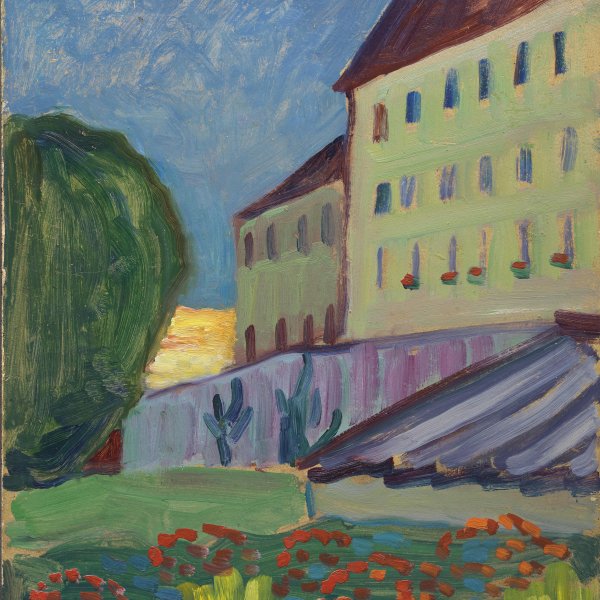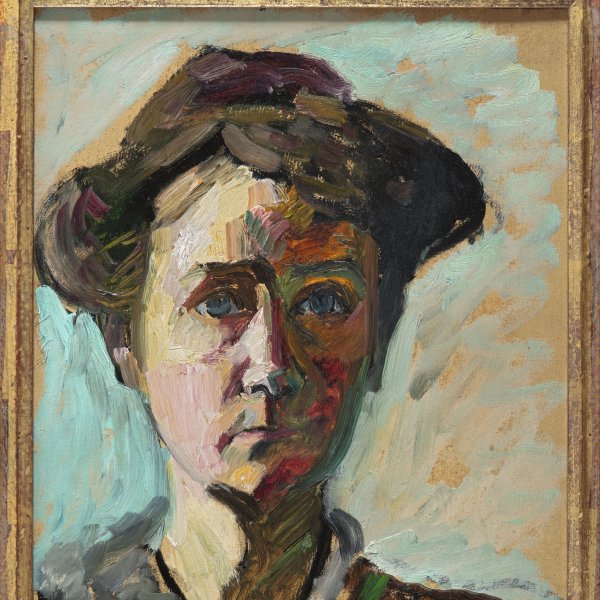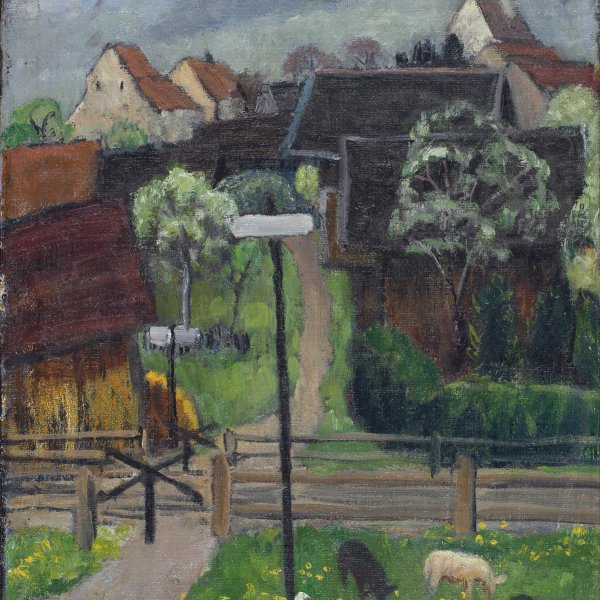Gabriele Münter
The painter Gabriele Münter played a key role in the development of German Expressionism in the early twentieth century. She was also one of the founders of The Blue Rider (Der Blaue Reiter), a group that made a decisive contribution to the Munich art scene.
Her early years were marked by her interest in photography, which took shape during a trip to the United States (1898–1900) to visit relatives in Missouri, Arkansas and Texas. In 1901 she returned to Germany, determined to become a professional artist. After a short stint at the Ladies’ Academy (Damen-Akademie) in Munich she enrolled at the Phalanx art school, where Wassily Kandinsky became her teacher and partner. Between 1904 and 1908 she travelled with him around Europe and northern Africa and lived in Paris for a year.
She returned to Munich in 1908 and during that summer she and Kandinsky discovered the town of Murnau. Located in the foothills of the Alps, it became a place for meeting and exchange with Alexej von Jawlensky and Marianne Werefkin, among others. There Münter’s art evolved towards simplified forms and a free use of colour, influenced both by her colleagues and by the discovery of the region’s typical paintings on glass.
From 1909 onwards she became one of the main promoters of Expressionism in Munich. She was involved in the New Artists’ Association of Munich (Neue Künstlervereinigung München, the NKVM) and her works were included in the exhibitions held by the association in 1909 and 1910. Kandinsky, Franz Marc and Münter left in 1911 due to disagreements over the selection of works and jointly organised another show, Der Blaue Reiter, where she displayed her paintings. During this period she also collaborated intensely on the almanac with the same name published in 1912.
In 1914, when the First World War broke out, Münter moved with Kandinsky to Switzerland and later, on her own, to Scandinavia, where she established close links with the local art scene and showed her works several times until 1920. On returning to Germany the following decade she led an itinerant lifestyle and mainly concentrated on drawing. After a year-long stay in Paris, in 1931 she settled permanently into the house she had purchased in 1909 in Murnau, where she lived and worked until her death.
Although her relationship with Kandinsky (from 1902 to 1916) has partially eclipsed her artistic personality, in recent years many studies and exhibitions have acknowledged her importance in the twentieth-century art scene.








